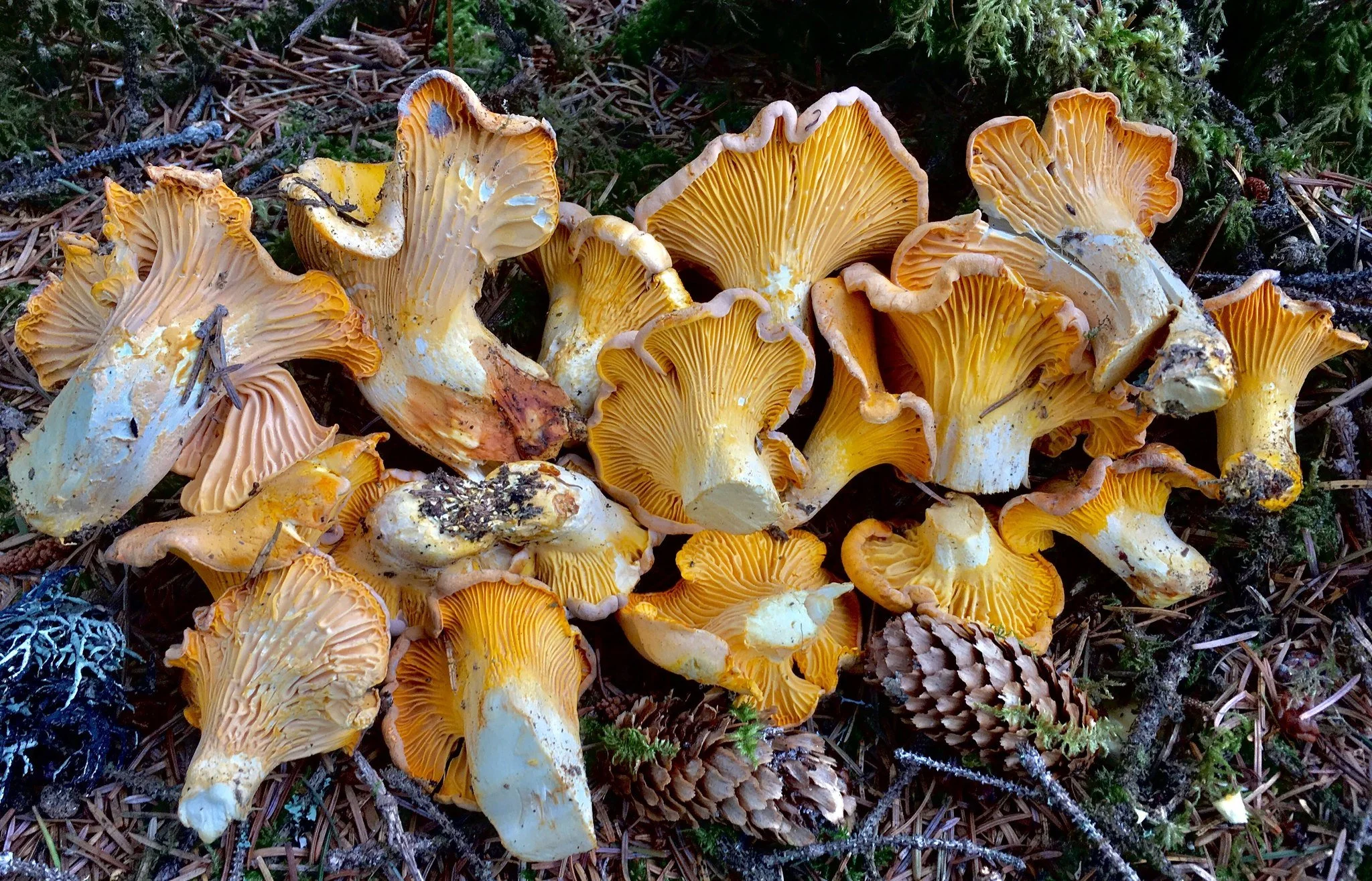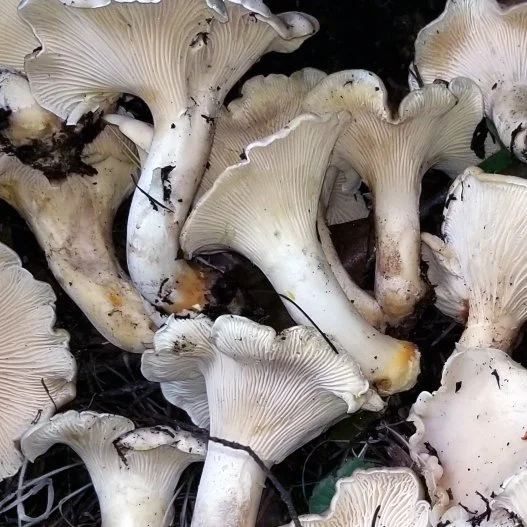Chanterelles
Chanterelles are mushrooms in the genus Cantharellus. They are related to trumpet mushrooms, which are also found in the family Cantharellaceae.
Our native species was once lumped in with the highly prized European golden chanterelle, Cantharellus cibarius, but was made a distinct species in the 1990s. With further research and genetic testing, it was found that we have several very similar species in the Pacific Northwest.
Cantharellus mushrooms are mycorrhizal, meaning the fungi form a symbiotic relationship with trees. As a result, although attempts have been made to cultivate them, they are only collected in the wild. Chanterelles are popular around the world and widely collected for commercial sale.
Species
Chanterelles
Pacific golden chanterelle (Cantharellus formosus)
Rainbow chanterelle (Cantharellus roseocanus)
Cascade chanterelle (Cantharellus cascadensis)
White chanterelle (Cantharellus subalbidus)
Pacific golden chanterelles
The Pacific golden chanterelle, Cantharellus formosus, is the most important commercially harvested species in the Pacific Northwest and probably one of the easiest wild mushrooms to find in stores here. Golden chanterelles are available in late summer through late fall and even into winter, depending on the weather. The harvest comes from higher elevations earlier in the season. Though they’re often compared with C. cibarius, they definitely don’t have the same flavor and aren’t a one-to-one substitution for each other. The Pacific golden chanterelle is earthier with a mild peppery flavor.
Cantharellus formosus is orange-yellow and has false gills (ridges that taper into the stem) under the cap. The false gills can have a pink tint, but this isn’t always the case. The tapered stem is often longer than on C. cibarius and they tend to be larger.
Pacific golden chanterelles grow under conifers in old-growth and second-growth forests throughout the Klamath Mountains region and the Northwest Coast regions. Their range continues all the way up through British Columbia.
Similar species
There are three additional chanterelle species found in the Pacific Northwest that are highly similar to the Pacific golden chanterelle, with minor physiological differences. The rainbow chanterelle and the Cascade chanterelle were once thought to be the same species as C. formosus.
All three species are considered choice edibles.
Rainbow chanterelles (Cantharellus roseocanus) are found under spruce and pine trees in mountainous areas across the western United States. In the Pacific Northwest, they’re especially found in the Coast Ranges, the Cascade Mountains, and the Rocky Mountains of Idaho. Like Pacific golden chanterelles, their range extends up into British Columbia.
This species is distinguished from C. formosus by its bright orange false gills. The caps of young mushrooms are often pinkish in color. Older caps are usually dull in color.
The physiological characteristics of the Cascade chanterelle (Cantharellus cascadensis) are a combination of the golden chanterelle and the rainbow chanterelle. They are found along the coast from British Columbia south into Northern California, in the Cascade Mountains, and the Sierra Nevada Mountains.
Cantharellus subalbidus, the white chanterelle, is found under conifers in the Coast Ranges, Cascade Mountains, and in the Idaho Rocky Mountains. White chanterelles prefer old-growth forests and are found in association with Douglas-fir trees.
Toxic mushrooms
Hygrophoropsis aurantiaca, commonly known as the “false chanterelle”, is found throughout the range of all the true chanterelle species of the Pacific Northwest. Unlike chanterelles, this orange mushroom has true gills and has soft, less firm flesh.
Western Jack-o-lantern mushrooms (Omphalotus olivascens) are found in Northern California, but not elsewhere in the Pacific Northwest. Though also orange, unlike chanterelles, these grow in clumps from wood and have true gills. They are saprotrophic rather than mycorrhizal.



